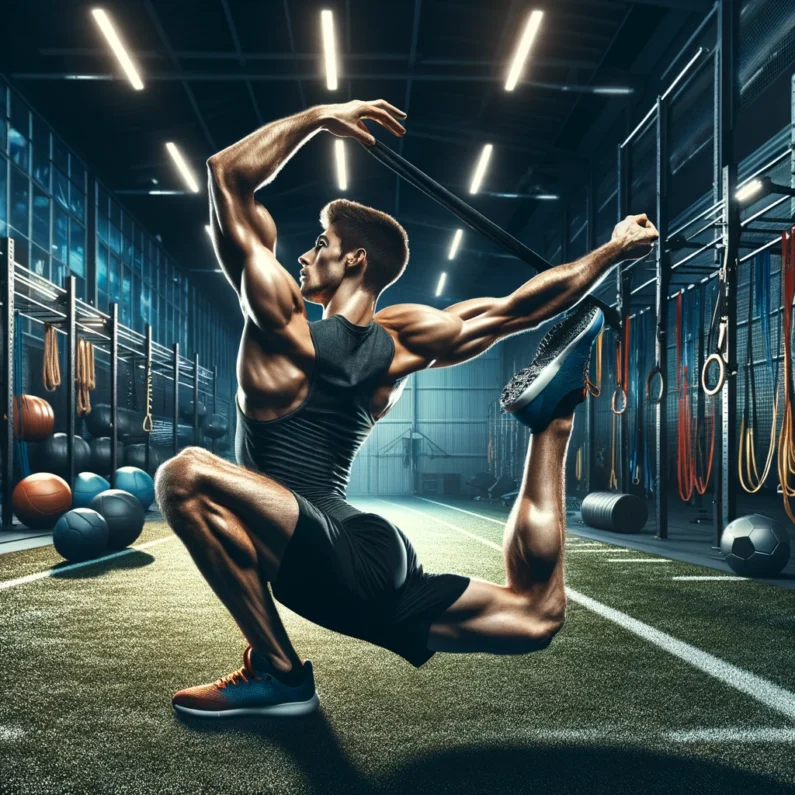Many sports require athletes to move their joints through a wide range of motion. Without enough flexibility, athletes risk increasing the likelihood of injury.
Flexibility refers to your muscles’ and joints’ ability to move through their full normal range of motion, helping promote proper body alignment, increase performance and decrease injury risk while decreasing muscle imbalance risk. It has many other advantages as well.
Range of motion
Physical fitness terminology refers to range of motion as the distance a joint or muscle can move. Although individual results can differ significantly, there are general standards regarding how far an area should move in each direction.
An ideal range of motion is essential for athletic performance, enabling you to perform exercises with proper form and reducing injuries, as well as helping you reach optimal results from strength training workouts.
But, when looking at pictures of elite athletes at work, they rarely demonstrate unusual levels of flexibility. Instead, they possess exceptional levels of strength, power, endurance, and balance; this is because most movements in sport occur within an acceptable range that most people can easily accomplish; exceptions occur when excessive fatty tissue or muscle mass impose limitations on a joint’s full range of movement, restricting flexibility and potentially leading to pain in certain joints.
Muscle strength
Muscular strength refers to the maximum force that one muscle or group of muscles can generate against resistance at one time. It’s an integral component of fitness and its influence can be felt across other variables like muscular endurance, speed and balance as well as day-to-day life functions such as being able to open doors and lift heavy boxes resulting in an active lifestyle.
Important to keep in mind is that being strong does not equate to being powerful. Even though you might be capable of performing many squats at the gym, if your muscles do not contract quickly enough then power is missing from your game.
Dynamic flexibility is required in sports that utilize full ranges of motion, such as gymnastics, diving and figure skating. Static-active flexibility requires using muscles to assume extended positions with assistance from another person while passive-passive flexibility enables extended stays in stretched positions.
Coordination
Coordination-minded athletes tend to excel at sports such as tennis, karate or football. This is because having flexible muscles and tendons that move the joints quickly results in faster movement without losing balance – saving energy thus enabling higher-level performances for longer.
Coordination can be developed through regular exercises and drills. It’s especially vital in sports such as dance and racket sports that require the simultaneous stimulation of multiple muscle groups; such training also helps develop balance, rhythm and spatial awareness. Young athletes should be exposed to this form of stimulation from an early age so their coordination develops before becoming limited by sport specific stimuli later.
Injury prevention
Flexibility training is a vital element of fitness but is often neglected during athletic and sports performance training. A regular flexibility routine can improve joint mobility, posture and reduce injury risks.
Although some individuals naturally possess greater flexibility than others, everyone can increase their own flexibility with regular stretching. Stretching can also help prevent injuries by relieving tight muscles and tendons during exercise and play that must be activated during movement.
Flexibility is of utmost importance for athletes as it increases their range of motion and can enable faster running, jumping higher, twisting more freely, turning quicker, reaching farther etc. Athletes should strive for symmetry; being less flexible on one side than another increases risk for muscle strains; additionally a review of studies on injury prevention has determined that stretching alone does not prevent injury in sport or other activities.

My passion for martial arts goes beyond practice; it is a philosophy that shapes my writing, bringing a distinctive edge to my narratives and advice. I hold black belts in two martial arts disciplines and have competed internationally, experiences that enrich my storytelling with authenticity and excitement.

